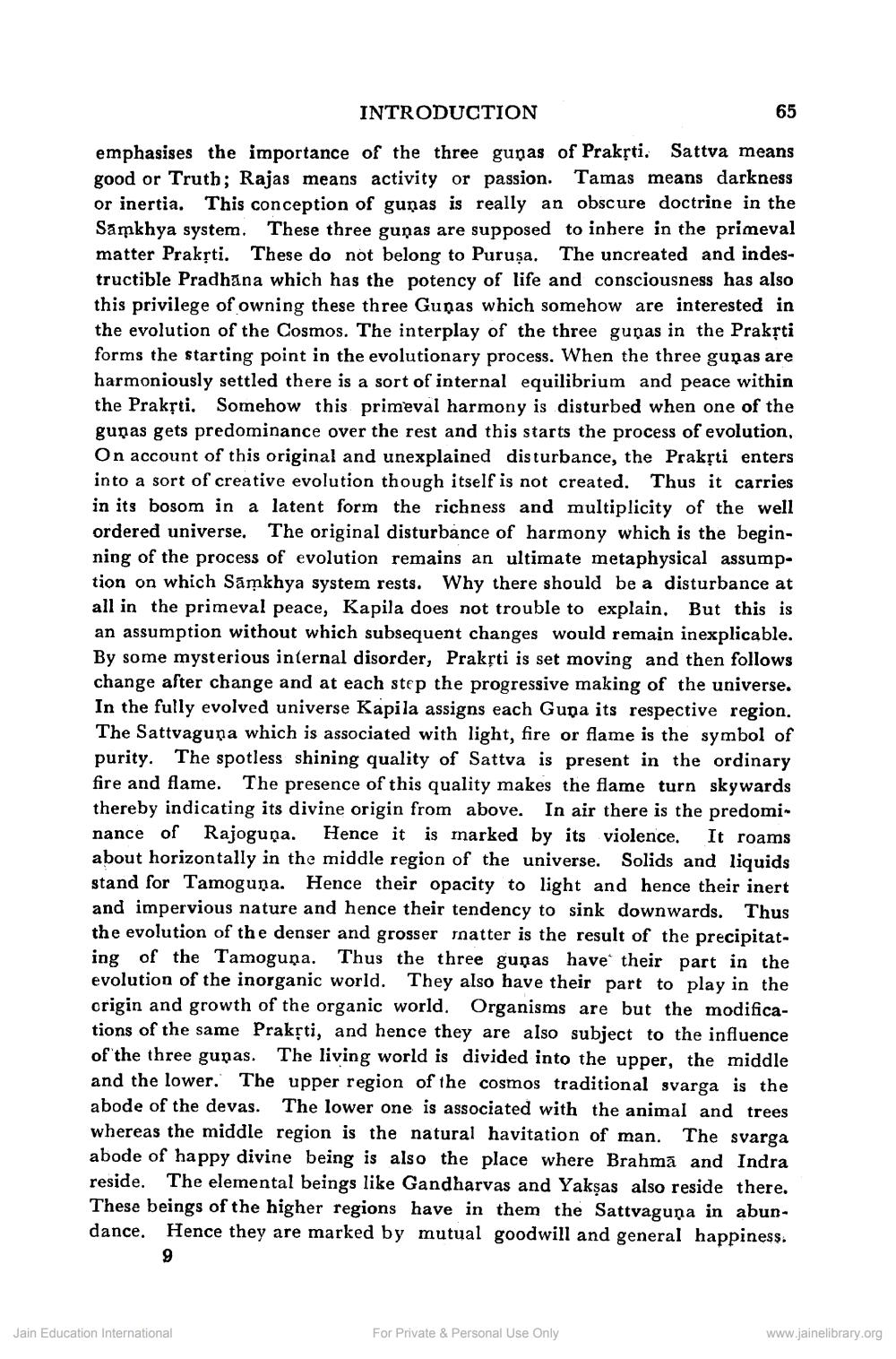________________
INTRODUCTION
emphasises the importance of the three gunas of Prakṛti. Sattva means good or Truth; Rajas means activity or passion. Tamas means darkness or inertia. This conception of gunas is really an obscure doctrine in the Samkhya system. These three guņas are supposed to inhere in the primeval matter Prakṛti. These do not belong to Purușa. The uncreated and indestructible Pradhana which has the potency of life and consciousness has also this privilege of owning these three Gunas which somehow are interested in the evolution of the Cosmos. The interplay of the three gupas in the Prakṛti forms the starting point in the evolutionary process. When the three gunas are harmoniously settled there is a sort of internal equilibrium and peace within the Prakṛti. Somehow this primeval harmony is disturbed when one of the gupas gets predominance over the rest and this starts the process of evolution, On account of this original and unexplained disturbance, the Prakṛti enters into a sort of creative evolution though itself is not created. Thus it carries in its bosom in a latent form the richness and multiplicity of the well ordered universe. The original disturbance of harmony which is the beginning of the process of evolution remains an ultimate metaphysical assumption on which Samkhya system rests. Why there should be a disturbance at all in the primeval peace, Kapila does not trouble to explain. But this is an assumption without which subsequent changes would remain inexplicable. By some mysterious internal disorder, Prakrti is set moving and then follows change after change and at each step the progressive making of the universe. In the fully evolved universe Kapila assigns each Guna its respective region. The Sattvaguna which is associated with light, fire or flame is the symbol of purity. The spotless shining quality of Sattva is present in the ordinary fire and flame. The presence of this quality makes the flame turn skywards thereby indicating its divine origin from above. In air there is the predominance of Rajoguņa. Hence it is marked by its violence. It roams about horizontally in the middle region of the universe. Solids and liquids stand for Tamoguna. Hence their opacity to light and hence their inert and impervious nature and hence their tendency to sink downwards. Thus the evolution of the denser and grosser matter is the result of the precipitating of the Tamoguņa. Thus the three gupas have their part in the evolution of the inorganic world. They also have their part to play in the origin and growth of the organic world. Organisms are but the modifications of the same Prakṛti, and hence they are also subject to the influence of the three guņas. The living world is divided into the upper, the middle and the lower. The upper region of the cosmos traditional svarga is the abode of the devas. The lower one is associated with the animal and trees whereas the middle region is the natural havitation of man. The svarga abode of happy divine being is also the place where Brahma and Indra reside. The elemental beings like Gandharvas and Yakṣas also reside there. These beings of the higher regions have in them the Sattvaguna in abundance. Hence they are marked by mutual goodwill and general happiness.
9
Jain Education International
For Private & Personal Use Only
65
www.jainelibrary.org




